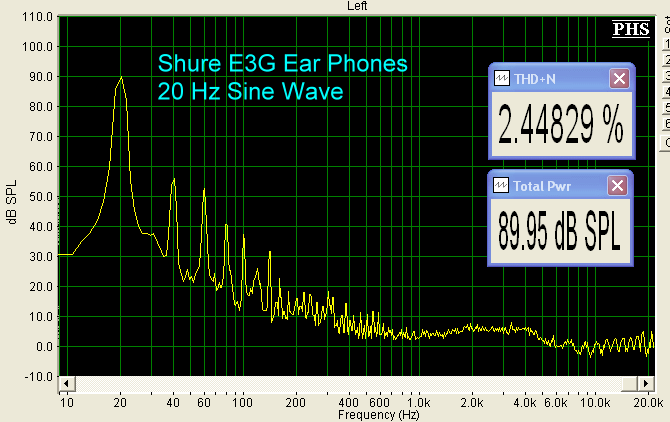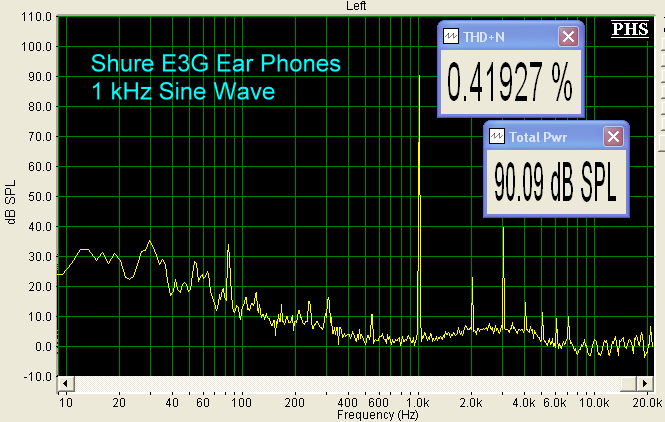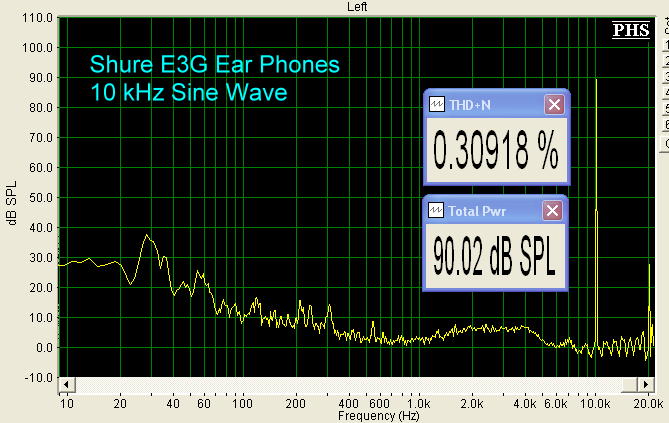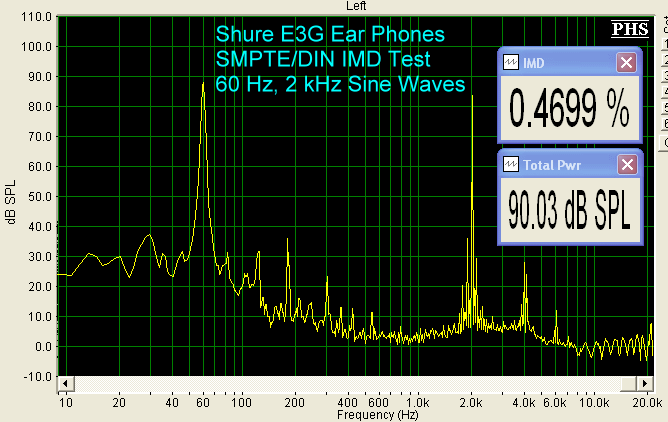|
||||||
|
Shure E3G Next on the list is the Shure E3G, which are in-ear phones with an MSRP of $199.
It would be nice if all the ear phones had the same size channel, as we could then buy a bag of generic foam plugs (I am calling them plugs here, but obviously, they have an opening for the sound) and choose the ones that fit best for any ear phone we owned. The E3Gs weigh 0.9 ounce and are 26 ohms impedance, with a sensitivity of 115 dB/mw. I liked the sound quality of the E3Gs very much, but they had somewhat less bass than the Denons. Again, no harshness, no extra sibilance, but plenty of detail. At this point I want to say that none of the ear phones gave me the bass that I really wanted, either because they don't have a good bass frequency response, or they just didn't fit with a good seal in my ears. This is a problem that the manufacturers should be working on. Below are the bench test graphs. The frequency response rolls off below 40 Hz and has a hump rather than a peak in the mid-highs beginning at 1 kHz, extending to 4 kHz. It rolls off quickly above 7 kHz. In the graphs from all the in-ear phones, you will see sets of peaks above 10 kHz, well below the main frequency response below 10 kHz. I believe this is due to diffraction effects (cancellation and augmentation) of the sound as it passes through the narrow plastic channel at the opening of the ear phone, where it holds the foam plug. In other words, the sound that passes through the middle of the channel meets reflected waves from the sides, and because the distance traveled by the reflected waves is longer, there is cancellation at certain frequencies when reflection distances are 1/2 wavelength, as well as augmentation when the increased distance reaches one wavelength.
At 20 Hz, THD+N was 2.2%.
The THD+N at 1 kHz was low, at 0.4%.
And, at 10 kHz, THD+N was 0.3%. Again, however, noise is playing a significant part here. Compare the second harmonic from this graph to the harmonics from the other ear phones. For example, the peak here is actually higher than that from the Denon, even though the total THD+Noise number is higher with the Denon. It seems therefore, that when the THD+N begins dropping below about 1%, we need to really take a close look at the actual harmonic peaks, rather than simply looking at the THD+N number. For the Shure E3G, the second harmonic is at - 62 dB with respect to the fundamental.
Our SMPTE/DIN IMD test resulted in almost 0.5% IMD. You can see several rather large peaks next to the 2 kHz fundamental. The test measures all the peaks within ± 250 Hz around the fundamental frequency. There are IMD peaks on either side of the second harmonic at 4 kHz, as well as the third harmonic at 6 kHz, but the IMD calculations do not include these peaks.
In summary for the Shure E3G, I gave them a 7 for sound quality, and 9 for fit.
|
||||||

 They
are very light, and fit nicely in my ears, without falling out, although
just a bit less comfortable than the Denon AH-C700s. This may be mostly
due to the slightly different shape of the plugs, as seen in the photo
below, since these two designs are very similar in shape and size. Also
notice that the output channel is not in line with the ear phone body,
but is at a slight angle.
They
are very light, and fit nicely in my ears, without falling out, although
just a bit less comfortable than the Denon AH-C700s. This may be mostly
due to the slightly different shape of the plugs, as seen in the photo
below, since these two designs are very similar in shape and size. Also
notice that the output channel is not in line with the ear phone body,
but is at a slight angle.






